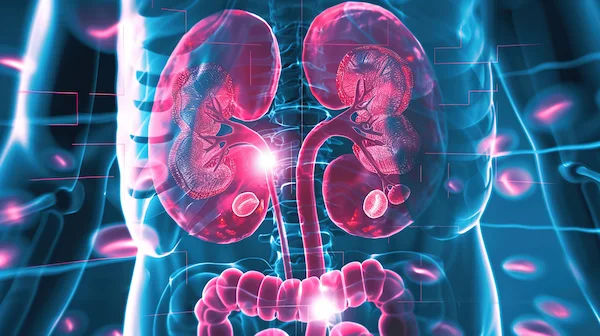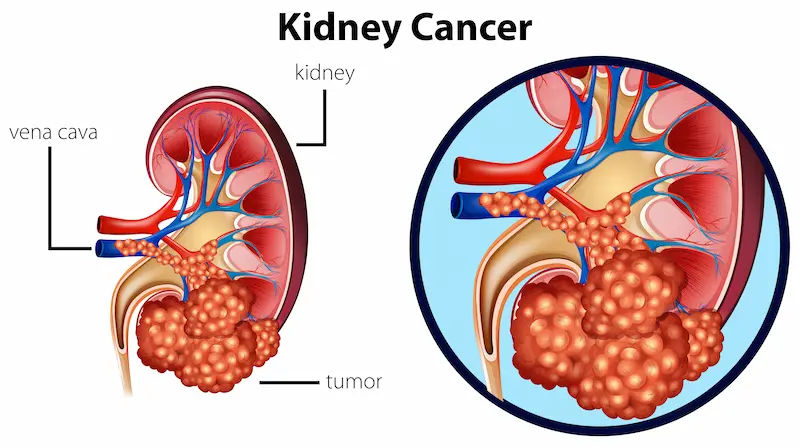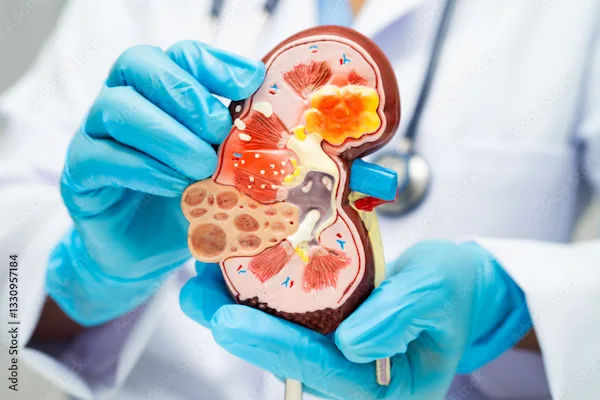Partial Nephrectomy Guide For World Kidney Day
Learn about partial nephrectomy, its purpose, benefits, and role in kidney health awareness this World Kidney Day.

Written by Dr. Dhankecha Mayank Dineshbhai
Reviewed by Dr. Vasanthasree Nair MBBS
Last updated on 30th Sep, 2025

Introduction
Your kidneys are incredible, silent workhorses, filtering waste and keeping your body in balance. So, when a doctor says the word "tumour" or "mass" on your kidney, it's understandably frightening. The immediate thought might be, "Will I lose my kidney?" Fortunately, modern medicine has a powerful answer: a partial nephrectomy. This kidney-sparing surgery is a remarkable procedure that removes the tumour while preserving as much healthy kidney tissue as possible. In honor of World Kidney Day, this guide will walk you through everything you need to know about this life-preserving and kidney-preserving operation. We'll cover why it's often the preferred choice, what the process entails, and what life looks like after surgery, empowering you to have informed discussions with your healthcare team.
What is a Partial Nephrectomy? Beyond the Medical Jargon
At its core, a partial nephrectomy is a surgical procedure to remove a kidney tumour while leaving the healthy part of the kidney intact. Think of it like removing a rotten spot from an apple instead of throwing the whole apple away. This approach is also formally known as nephron-sparing surgery "nephron" being the crucial filtering units of your kidney.
The Core Principle: Nephron-Sparing Surgery
The primary goal is preservation. Every bit of healthy kidney tissue is valuable for your long-term health. By saving it, surgeons aim to maintain your kidney function at the highest possible level, reducing the risk of future chronic kidney disease.
Partial Nephrectomy vs. Radical Nephrectomy: A Critical Choice
This is the most important distinction to understand. A radical nephrectomy involves removing the entire kidney, the adrenal gland (which sits on top of the kidney), and surrounding fatty tissue. While effective at eliminating cancer, it leaves you dependent on a single kidney.
A partial nephrectomy, in contrast, is a more complex procedure that prioritises kidney preservation. Decades of research have shown that for many patients, especially those with smaller tumours (typically under 7 cm), the cancer control outcomes are just as good as with a radical nephrectomy, but with the significant added benefit of preserved kidney function.
Consult a Uro-Oncologist for the best advice
Why Choose a Partial Nephrectomy? The Key Benefits
The shift towards partial nephrectomy as the standard of care for small kidney tumours is driven by its profound benefits, which extend far beyond just curing the cancer.
Preserving Kidney Function: The Long-Term Health Advantage
This is the number one benefit. Your kidneys have a built-in reserve, but removing an entire kidney places a lifelong strain on the remaining one. Studies consistently show that patients who undergo a partial nephrectomy have better long-term kidney function compared to those who have a radical nephrectomy. This is crucial for overall health, as impaired kidney function is linked to a higher risk of heart disease, bone disorders, and other complications.
Reducing the Risk of Future Kidney Disease
If you have conditions like high blood pressure or diabetes both common causes of kidney disease preserving as much kidney tissue as possible becomes even more critical. A nephron-sparing approach acts as a safeguard, giving you a larger functional reserve to combat any future decline in kidney health.
Are You a Candidate for Partial Nephrectomy?
Not every kidney tumour can be treated with a partial nephrectomy. The decision is made by a multidisciplinary team, including a urologist and an oncologist, based on several factors.
Ideal Scenarios for Kidney-Sparing Surgery
You are likely an excellent candidate for a partial nephrectomy if:
- The tumour is small (generally less than 7 cm, often referred to as a "small renal mass").
- The tumour is located in a position that makes it technically feasible to remove safely without damaging the rest of the kidney.
- You have a single tumour.
- You have normal function in the other kidney.
- You have conditions that predispose you to future kidney problems.
When Might a Radical Nephrectomy Be Necessary?
In some cases, a radical nephrectomy is the safer or only option. This includes very large tumours, tumours that are centrally located and involve the main blood vessels of the kidney, or cases where the cancer has spread extensively within the kidney.
The Procedure: What Happens During a Partial Nephrectomy?
Understanding the surgery can alleviate anxiety. The procedure is highly sophisticated, focusing on two main goals: completely removing the tumour and reconstructing the kidney to ensure it functions properly afterward.
Surgical Approaches: Robotic, Laparoscopic, and Open Surgery
Most partial nephrectomies today are performed using minimally invasive techniques.
Robotic-Assisted Laparoscopic Partial Nephrectomy: The Gold Standard
This is the most common approach. The surgeon operates using a console that controls robotic arms with tiny instruments and a high-definition 3D camera. The benefits are significant:
- Enhanced Precision: The robotic system filters out hand tremors and allows for movements more precise than the human hand.
- Magnified Vision: The surgeon sees a magnified, crystal-clear view of the kidney and its delicate blood vessels.
- Faster Recovery: With only a few small incisions, patients experience less pain and blood loss, leading to a shorter hospital stay and quicker return to daily activities.
Traditional Open Partial Nephrectomy: When is it Used?
In an open surgery, the surgeon makes a larger incision in the side or abdomen to access the kidney directly. This approach may be necessary for very complex tumours or if a patient has had extensive prior abdominal surgery.
The Surgery Step-by-Step: Tumour Removal and Kidney Reconstruction
Regardless of the approach, the critical steps are similar:
1. Access and Isolation: The kidney is carefully exposed, and its blood supply is controlled.
2. Tumour Excision: The tumour is precisely cut away from the healthy kidney tissue with a margin of healthy tissue to ensure complete removal.
3. Kidney Reconstruction: This is the most delicate part. The surgeon stitches the remaining kidney together to close the defect and stop any bleeding. Sometimes, the collecting system of the kidney (where urine is gathered) also needs to be repaired.
4. Restoring Blood Flow: The blood supply to the kidney is restored. The goal is to minimise "warm ischemia time," the period the kidney is without blood flow, to protect its function.
Life After Partial Nephrectomy: Long-Term Outlook
The success of the surgery is just the beginning. Your long-term health depends on diligent follow-up care and healthy lifestyle choices.
Follow-Up Care and Monitoring is Crucial
Your doctor will create a personalised surveillance plan. This typically involves periodic CT scans or ultrasounds to check for any signs of cancer recurrence, as well as regular blood tests (like creatinine and GFR) to monitor your kidney function. Adhering to this schedule is non-negotiable. If you have concerns about your recovery or test results, consulting a urologist online with Apollo24|7 can provide timely reassurance and guidance.
Diet and Lifestyle for Optimal Kidney Health
To support your kidneys for life, consider these steps:
- Stay Hydrated: Drink plenty of water throughout the day.
- Manage Blood Pressure: High blood pressure is a major enemy of kidney health.
- Eat a Balanced Diet: Focus on fruits, vegetables, and whole grains, and limit sodium, processed foods, and excessive protein.
- Avoid NSAIDs: Over-the-counter painkillers like ibuprofen and naproxen can harm kidney function. Use them sparingly and only after consulting your doctor.
Conclusion
A diagnosis of a kidney tumour can be daunting, but the advancements in nephron-sparing surgery like partial nephrectomy offer tremendous hope. This procedure effectively treats cancer while prioritising your long-term health by preserving vital kidney function. By choosing a skilled surgical team and being an active participant in your recovery and follow-up care, you can look forward to a healthy future. On this World Kidney Day, let this guide empower you to understand your options and advocate for the care that best supports your overall well-being. Your journey to health is a partnership with your medical team; take the first step by seeking expert advice.
Consult a Uro-Oncologist for the best advice
Consult a Uro-Oncologist for the best advice

Dr. Rohit Bhattar
Uro Oncologist
14 Years • MBBS, MS, MCh (Urology), Fellowship in Uro-oncology and Robotic Urology (United Kingdom)
Ahmedabad
Apollo Hospitals Gandhinagar, Ahmedabad
(100+ Patients)

Dr. Rupam Manna
Radiation Specialist Oncologist
4 Years • MBBS MD(RADIO THERAPY)
Barasat
Diab-Eat-Ease, Barasat

Dr. Dhruv B. Patel
Urologist
12 Years • MBBS, MS, DrNB (Urology - IKDRC, Ahmedabad)
Ahmedabad
Apollo Hospitals Gandhinagar, Ahmedabad
(25+ Patients)
Dr. B Shravanthi Reddy
Radiation Specialist Oncologist
8 Years • MBBS, DNB(Radiation Oncology)
Manikonda Jagir
Apollo Clinic, Manikonda, Manikonda Jagir

Dr. K Ramesh
Urologist
23 Years • M.S., FRCS(Glasgow)., IntlFRCS (Glasgow)(Urology), DNB(Urology), FEBU (Fellow of European Board Of Urology)
Chennai
Apollo Hospitals Greams Road, Chennai
(650+ Patients)
Consult a Uro-Oncologist for the best advice

Dr. Rohit Bhattar
Uro Oncologist
14 Years • MBBS, MS, MCh (Urology), Fellowship in Uro-oncology and Robotic Urology (United Kingdom)
Ahmedabad
Apollo Hospitals Gandhinagar, Ahmedabad
(100+ Patients)

Dr. Rupam Manna
Radiation Specialist Oncologist
4 Years • MBBS MD(RADIO THERAPY)
Barasat
Diab-Eat-Ease, Barasat

Dr. Dhruv B. Patel
Urologist
12 Years • MBBS, MS, DrNB (Urology - IKDRC, Ahmedabad)
Ahmedabad
Apollo Hospitals Gandhinagar, Ahmedabad
(25+ Patients)
Dr. B Shravanthi Reddy
Radiation Specialist Oncologist
8 Years • MBBS, DNB(Radiation Oncology)
Manikonda Jagir
Apollo Clinic, Manikonda, Manikonda Jagir

Dr. K Ramesh
Urologist
23 Years • M.S., FRCS(Glasgow)., IntlFRCS (Glasgow)(Urology), DNB(Urology), FEBU (Fellow of European Board Of Urology)
Chennai
Apollo Hospitals Greams Road, Chennai
(650+ Patients)
More articles from Kidney Cancer
Frequently Asked Questions
How long does it take to fully recover from a robotic partial nephrectomy?
Most people can return to light office work within 2-4 weeks. However, it can take 6-8 weeks or longer to resume strenuous activities, heavy lifting, and intense exercise. Your surgeon will give you specific guidelines based on your progress.
Is a partial nephrectomy a major surgery?
Yes, it is considered major surgery because it involves operating on a vital organ. However, minimally invasive techniques have significantly reduced the physical trauma, pain, and recovery time compared to open surgery.
What are the dietary restrictions after a partial nephrectomy?
Initially, you may be on a light diet. Long-term, it's about kidney-healthy eating: limiting salt, processed meats, and phosphorus-rich foods, and staying hydrated. A dietitian can provide personalised advice, especially if you have pre-existing conditions like diabetes.
Can kidney cancer come back after a partial nephrectomy?
Yes, there is a small risk of recurrence either in the same kidney or the other kidney. This is why lifelong monitoring with imaging scans is so important to catch any recurrence early when it is most treatable.
What is the success rate for partial nephrectomy surgery?
For small, localised kidney tumours, the cancer-specific survival rate is extremely high, often over 95% at 5 years. The success depends on the tumour's size, stage, and aggressiveness.
.webp)



